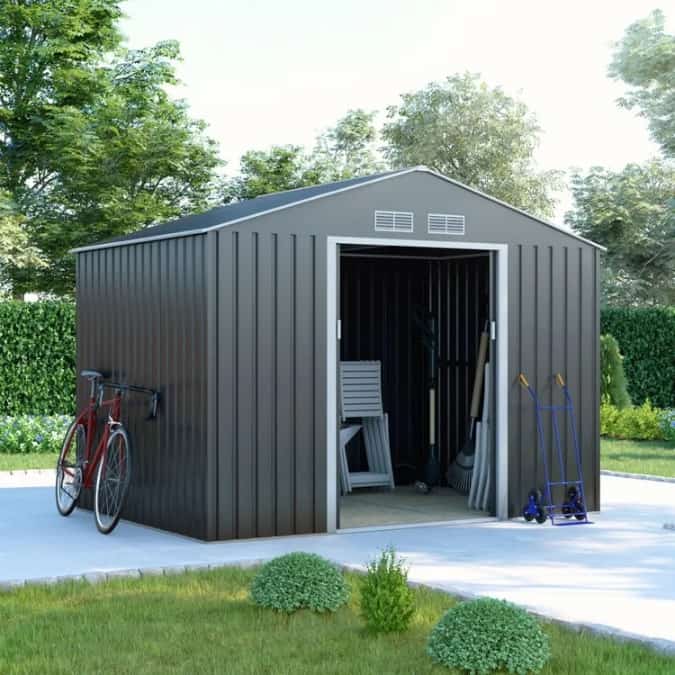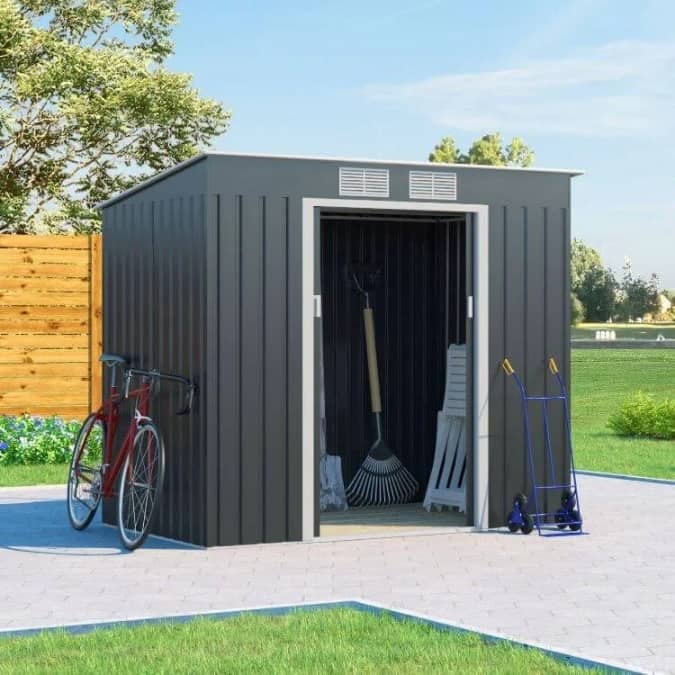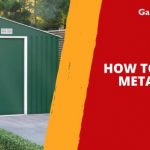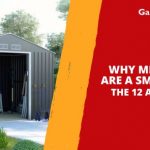Jump to:
Metal sheds are known for being tough and long-lasting, but how long do they actually last? This guide looks at their average lifespan and the factors that affect it, so you can ensure yours remain functional and in good condition for years.
What’s the Average Lifespan of Metal Sheds?

A metal shed can last anywhere from 15 to 30 years or even longer, depending on a few factors. The quality of the materials, like galvanised steel, helps it resist rust and wear. Also, how well it’s built and put together makes a big difference.
The weather is also a big factor. It might not last as long if you’re in an area with harsh conditions, like heavy rain or extreme temperatures. High humidity can speed things up as well.
To better understand the materials and construction behind these structures, read our guide, ‘What Are Metal Sheds Made From?’ next.
Other Factors That Impact How Long Your Metal Shed Lasts
Besides the type of metal and the weather, here are a few other things you should pay attention to that can affect your metal shed’s lifespan:
Metal shed base
If the base isn’t strong or level, it can cause issues down the line. The shed could end up crooked, making it hard to close the doors or causing the walls to warp. Over time, that can weaken the structure and lead to rust or holes.

How does a solid base help? It spreads the shed’s weight evenly, keeping it stable. It also prevents water from reaching the bottom, which helps stop rust and extend its life.
Frequency of use
By “regular use,” we mean things like opening and closing the doors or moving things around, which can put some stress on the parts. But that’s nothing a little maintenance can’t handle. A quick fix here and there will keep everything running smoothly, keeping these parts functional.
Exposure to chemicals
Exposure to chemicals like fertilisers, pesticides, or cleaning products can also be the root cause of rust or corrosion. For one, they react with the metal, weakening it over time. If overlooked, this can lead to holes and shorten the shed’s lifespan.
If you can, separate different types to prevent any reactions. And if you do spill something, clean it up straight away to prevent it from damaging the metal.
Lack of maintenance
While metal sheds are low maintenance, that doesn’t mean regular upkeep isn’t necessary. There are a few signs to look out for that could shorten its lifespan.
You’ll know your shed needs some attention if you start seeing patches of rust. That’s a sign moisture has been left on the metal for too long without being cleaned off or protected. Another red flag is when the metal panels start to warp, bend, or buckle. If the doors become hard to open or close, the hinges or frame might be damaged. And if the shed starts leaning or shifting, the base may not be secure anymore.
Give this guide a read to find out How Strong Are Metal Sheds? You’ll also pick up some handy maintenance tips to help it last longer.










